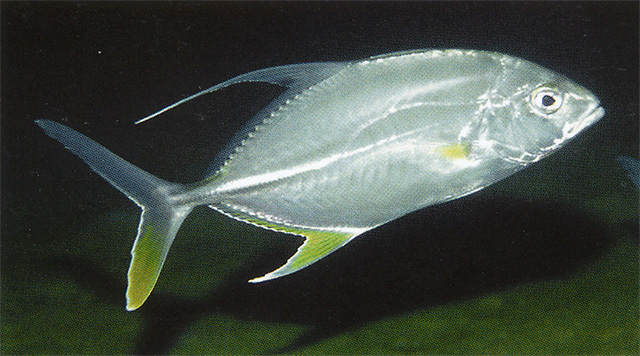| Carangidae (Jacks and pompanos), subfamily: Caranginae |
| 46 cm TL (male/unsexed) |
|
reef-associated; marine |
| Indo-Pacific: Gulf of Aden and East Africa to Fiji and Tonga, north to southern Japan, south to the Arafura Sea (Ref. 9819) and Australia. |
|
Dorsal spines (total): 9-9; Dorsal soft rays (total): 17-19; Anal spines: 3-3; Anal soft rays: 15-17. Description: Bluish green dorsally, shading to silvery white ventrally; small dark blotches on back between bases of dorsal rays (Ref. 3197). Anal fin and lower lobe of caudal fin yellowish (Ref. 90102). Dorsal profile more convex than ventral profile; breast scaless ventrally to origin of pelvic fins; LL with 37-45 scutes (Ref. 90102). LL with 23-30 scutes. Anal fin with filament as well as on dorsal (Ref. 48635). Both jaws with bands of small teeth, upper jaw also with irregular outer series od moderately large teeth (Ref. 90102). |
| Adults inhabit coastal waters near coral reefs or on sand/rubble bottoms (Ref. 5213, 90102). Usually in small schools (Ref. 48635). May also be found solitary (Ref. 90102). |
|
Least Concern (LC); Date assessed: 09 March 2015 Ref. (130435)
|
| harmless |
Source and more info: www.fishbase.org. For personal, classroom, and other internal use only. Not for publication.
